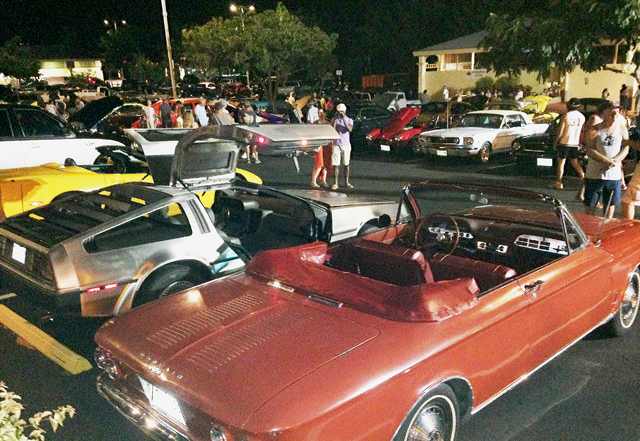KAILUA-KONA — The Food Basket is feeling a little empty after the closing days of 2015 and the automobile community wants to fill up the island’s only food bank. ADVERTISING KAILUA-KONA — The Food Basket is feeling a little empty
KAILUA-KONA — The Food Basket is feeling a little empty after the closing days of 2015 and the automobile community wants to fill up the island’s only food bank.
Multiple cars and trucks will be in the parking lot in front of Famous Footwear in Lanihau Center in Kailua-Kona from 6 to 9 p.m. Jan. 16.
There will be music, raffles and displays of a wide variety of machines for the event.
“Everyone that comes and donates a nonperishable food item/cash at the car show, has a chance to win prizes donated by Lanihau Center Merchants and other local businesses in Kona,” wrote event organizer Margo Takata in an email.
They are trying to gather at least 500 pounds of food, which organizer Paul Maddox said is a number they have passed before.
That would feed about 325 people, said Kristin Frost Albrecht, public relations director for the Food Basket.
“The food donations that come in from food drives are a huge help in that they typically bring in canned protein, rice, canned meals, vegetables and fruit — people tend to give food that they would like to eat if they were hungry,” she wrote.
Although the Lanihau Center does not keep exact numbers of the food donated, they have likely gathered more than 2,000 pounds of food since they began periodic collections seven years ago, Takata wrote.
Cash donations will also be welcome so the Food Basket can turn those into wholesale food buys that will help refill their shelves.
“We just encourage folks to attend and bring food, or even better, money. They can make a $20 bill go a lot farther than we can at Sack N Save,” said Maddox.
That’s true, Albrecht said.
”We are able to procure food at much reduced prices via the USDA. For every dollar we receive, The Food Basket can acquire roughly five and half pounds of healthy, nutritious food for distribution to our most vulnerable island residents – providing approximately 3.5 meals for those in need,” she wrote.



